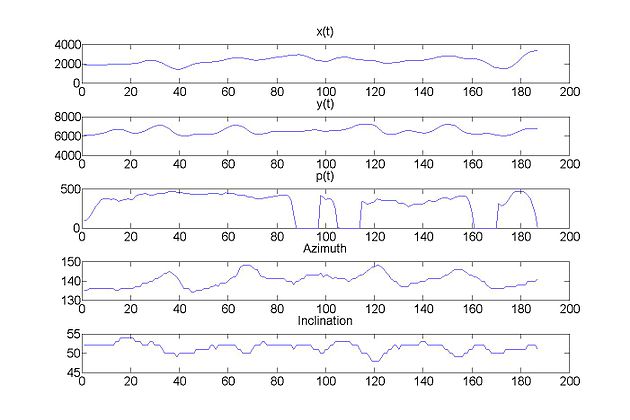

Signature recognition is an example of behavioral biometrics that identifies a person based on their handwriting. It can be operated in two different ways:
Static: In this mode, users write their signature on paper, and after the writing is complete, it is digitized through an optical scanner or a camera to turn the signature image into bits.[1] The biometric system then recognizes the signature analyzing its shape. This group is also known as "off-line".[2]
Dynamic: In this mode, users write their signature in a digitizing tablet, which acquires the signature in real time. Another possibility is the acquisition by means of stylus-operated PDAs. Some systems also operate on smart-phones or tablets with a capacitive screen, where users can sign using a finger or an appropriate pen. Dynamic recognition is also known as "on-line". Dynamic information usually consists of the following information:[2]
- spatial coordinate x(t)
- spatial coordinate y(t)
- pressure p(t)
- azimuth az(t)
- inclination in(t)
- pen up/down
The state-of-the-art in signature recognition can be found in the last major international competition.[3]
The most popular pattern recognition techniques applied for signature recognition are dynamic time warping, hidden Markov models and vector quantization. Combinations of different techniques also exist.[4]
- ^ Ismail, M.A.; Gad, Samia (Oct 2000). "Off-line arabic signature recognition and verification". Pattern Recognition. 33 (10): 1727–1740. Bibcode:2000PatRe..33.1727I. doi:10.1016/s0031-3203(99)00047-3. ISSN 0031-3203.
- ^ a b "Explainer: Signature Recognition | Biometric Update". www.biometricupdate.com. 2016-01-11. Retrieved 2021-04-03.
- ^ Houmani, Nesmaa; A. Mayoue; S. Garcia-Salicetti; B. Dorizzi; M.I. Khalil; M. Mostafa; H. Abbas; Z.T. Kardkovàcs; D. Muramatsu; B. Yanikoglu; A. Kholmatov; M. Martinez-Diaz; J. Fierrez; J. Ortega-Garcia; J. Roure Alcobé; J. Fabregas; M. Faundez-Zanuy; J. M. Pascual-Gaspar; V. Cardeñoso-Payo; C. Vivaracho-Pascual (March 2012). "BioSecure signature evaluation campaign (BSEC'2009): Evaluating online signature algorithms depending on the quality of signatures". Pattern Recognition. 45 (3): 993–1003. Bibcode:2012PatRe..45..993H. doi:10.1016/j.patcog.2011.08.008. S2CID 17863249.
- ^ Faundez-Zanuy, Marcos (2007). "On-line signature recognition based on VQ-DTW". Pattern Recognition. 40 (3): 981–992. Bibcode:2007PatRe..40..981F. doi:10.1016/j.patcog.2006.06.007.